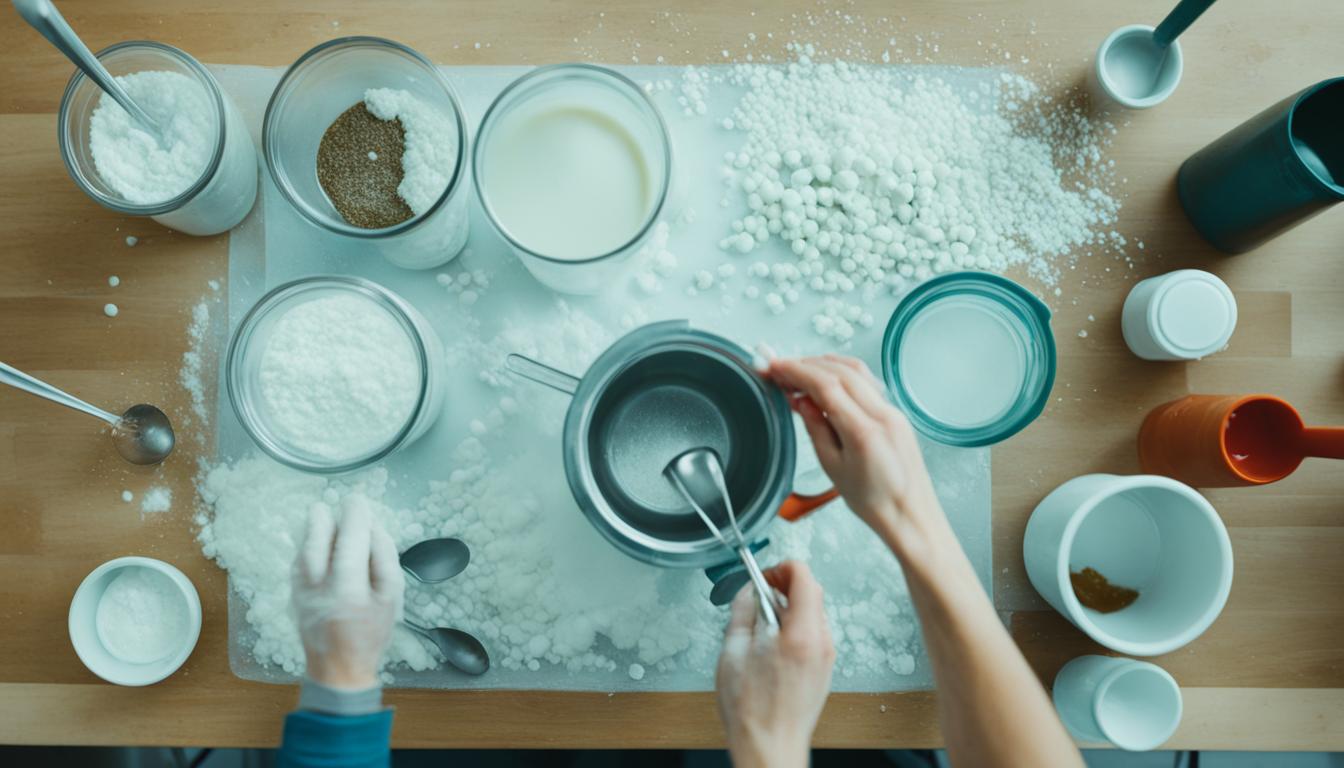
DIY Guide: How to Make a Cheap Mold at Home
Welcome to our comprehensive DIY guide on how to make a cheap mold at home. Whether you are a craft enthusiast or need molds for various projects, this guide will provide you with cost-effective techniques and step-by-step instructions to create molds without breaking the bank.
Creating molds at home can be a fun and rewarding process. With the right materials and techniques, you can achieve professional-looking results without spending a fortune. Our guide will walk you through the entire mold making process, from selecting affordable materials to mold creation and casting.
Key Takeaways:
- Learn how to make inexpensive molds using simple materials
- Discover cost-effective techniques for mold making at home
- Save money without compromising on quality
- Experiment with different materials to find what works best for you
- Create professional-looking molds on a budget
Cost-Effective Mold Making Techniques
Creating molds doesn’t have to break the bank. In this section, we will explore various techniques for budget-friendly and cost-effective mold making. By using inexpensive materials and clever strategies, you can enjoy the art of mold making without worrying about the cost. Let’s dive in!
1. Repurposing Household Items
One way to save money on mold making is by repurposing household items. Look around your home for containers, trays, or even old silicone baking molds that can be used as molds for your projects. Not only will this save you money, but it will also give a new life to items that you might have otherwise discarded.
2. Silicone Caulk Method
The silicone caulk method is a popular and inexpensive technique for creating molds. It involves using a 100% silicone caulk, which is readily available at hardware stores. By mixing the caulk with cornstarch or flour, you can create a mold-making material that is both flexible and cost-effective. This method is particularly useful for small-scale projects such as jewelry making or crafting figurines.
3. Alginate Molding
Alginate molding is a technique commonly used in the dental industry but can also be applied to other mold making projects. Alginate is a seaweed-based material that is safe and easy to work with. It provides a quick and affordable way to create molds with intricate details. Alginate molds are perfect for one-time use and are particularly suitable for making body molds or capturing delicate textures.

4. 3D Printing
If you have access to a 3D printer, it can be a game-changer for cost-effective mold making. With the ability to design and print custom molds, you can save time and money by avoiding traditional mold-making materials. 3D printing allows you to create complex shapes and multiple molds with ease, giving you more design flexibility and reducing material waste.
“By implementing these cost-effective mold making techniques, you can stretch your budget without compromising on the quality of your molds.”
Remember, mold making on a budget doesn’t mean sacrificing quality. With a little creativity and resourcefulness, you can achieve impressive results without breaking the bank. Choose the technique that suits your project and give it a try. Happy mold making!
Conclusion
In conclusion, learning how to make a cheap mold at home is a practical skill that can save you money while allowing you to unleash your creativity. By following the DIY guide outlined in this article, you can achieve fantastic results without breaking the bank.
Remember, the key to making affordable molds is to be resourceful and think outside the box. Instead of expensive materials, look for budget-friendly alternatives. For example, consider using silicone caulk or homemade modeling clay instead of costly professional-grade materials.
Additionally, don’t be afraid to experiment with different techniques and materials. Mold making is a versatile craft, and there are countless ways to achieve the desired results. Embrace the process and explore different possibilities until you find what works best for you.
With the right techniques and a little bit of patience, you can embark on your mold-making journey and enjoy the satisfaction of creating unique molds for various projects, all while staying within your budget. So go ahead, unleash your creativity, and make your cheap molds at home!




